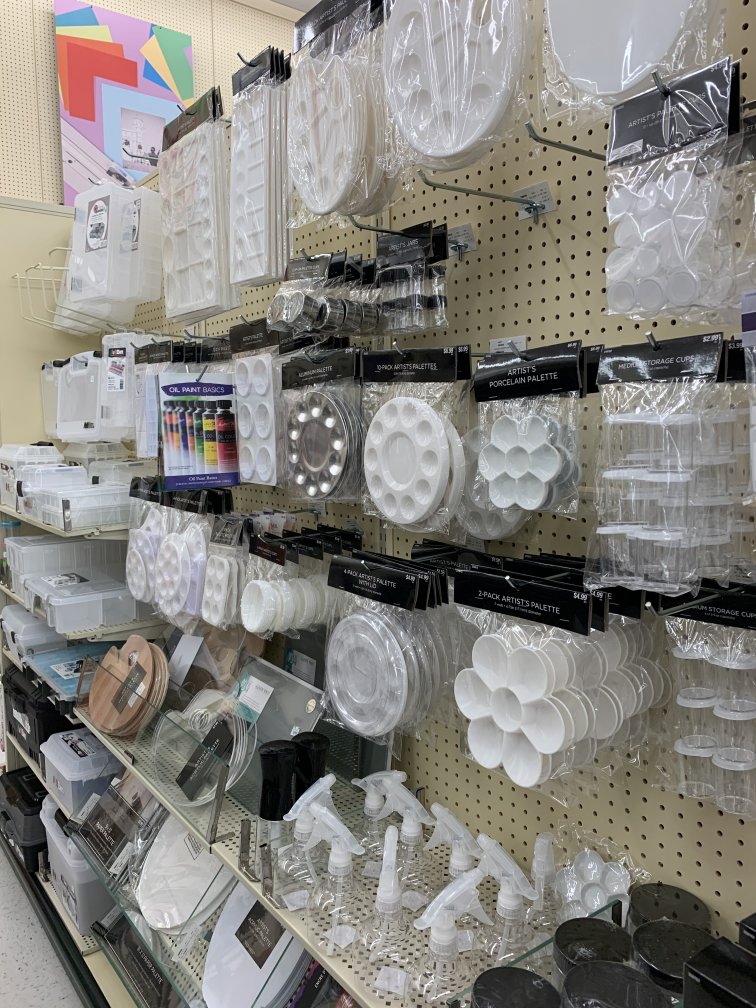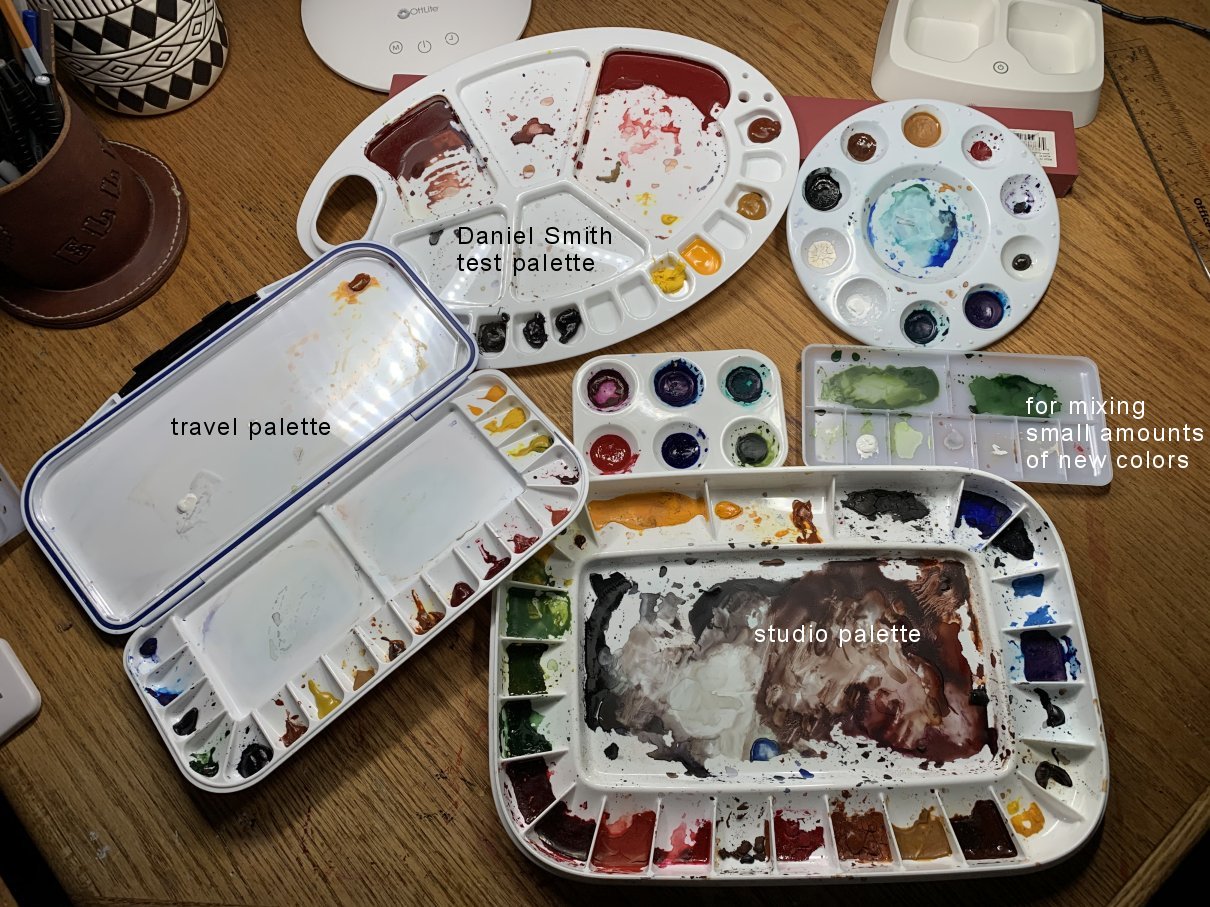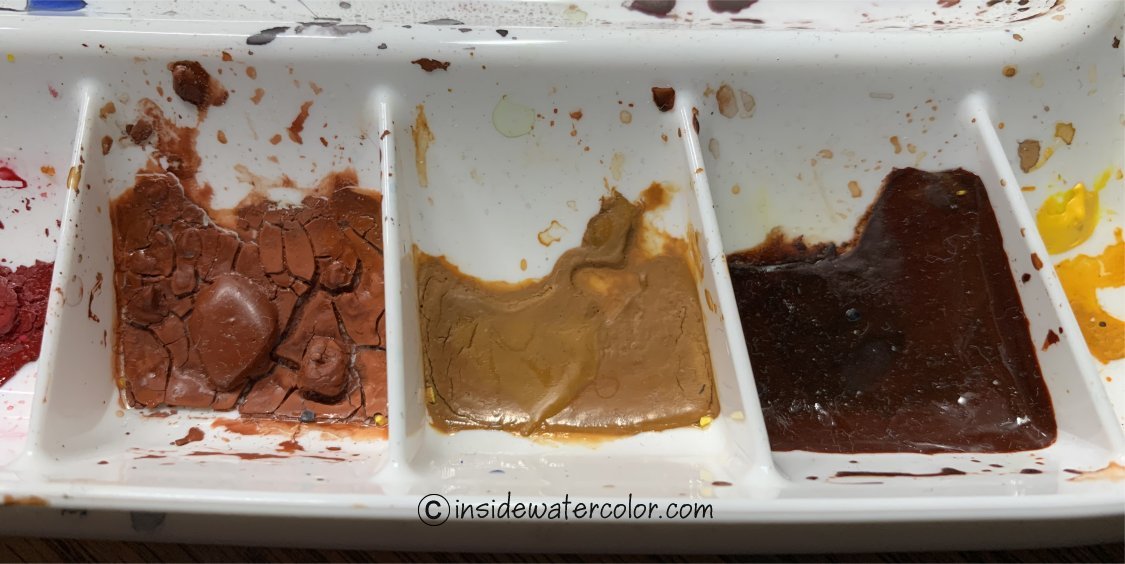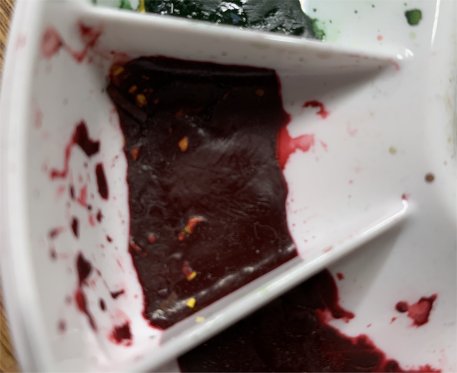Choosing a Watercolor Palette
The term watercolor palette has to be defined first, because the term can mean both the choice of colors on an artist’s palette, or the actual physical palette itself. The physical palette is the surface on which you can mix your paint and water, and they come in all kinds of sizes and shapes.
Some artists use a disposable plastic or foam plate, and others swear by a porcelain palette. Metal trays with a white enameled surface (called butcher trays) are also popular. I choose my palettes by size to match my work area.
Plastic palettes created specifically for watercolor painting are common and
popular. They come in a range of different shapes and sizes, with various numbers
of wells, the areas that hold the various paint colors. Even the wells themselves can
be different, with some having no edge, others being deep and others being
shallow.
 The wide variety of watercolor palette choices..
The wide variety of watercolor palette choices..Below is a picture of some of my palettes. The larger messy one at the bottom of the picture stays in my studio. I use the pale gray 9-compartment one on the right to mix up small amounts of new colors on the fly, so I don’t have to clean off my larger palette. These smaller cheap palettes come in a four pack for about 2 bucks at the craft store. Very handy if you working on a detailed painting, and just need a little color for an area.
The smaller palettes with round wells are holding new colors that wouldn’t fit on my larger studio palette
The large, rounded plastic palette is a test pallet for the new Daniel Smith colors I bought a few months ago. I wanted to keep them separate so I could do some comparison testing.
On the left, there's my 18-well travel palette. It snaps closed to protect the paints. This is a must for when
I travel.
 Some of my palette choices
Some of my palette choicesPalette size is one factor to consider. The nice thing about larger palettes is that they have more wells for paint color choices. The higher number of wells allows me to have access to many different colors of paint on one palette.
In addition, larger palettes also include more mixing area in the middle of the palette. However, I’ve learned the hard way that it is better to have several divided mixing areas, not just one big area.
It is truly horrifying to see all of the color puddles you've just finished mixing run together because you accidentally tilted the palette. My studio palette has that issue, which is why I end up using the small divided palettes a lot. At some point, I'm going to buy a large palette with many wells and divided mixing areas.
Traveling Watercolor Palette Choices
There are all kinds of traveling palettes made for "plein air" painting classes and excursions. I looked up that term, and found it means “in the open air” in French. The idea is to paint an outdoor, sunlit scene while you are there in person. But I digress.
The point I want to make is about the paint you choose to put on your traveling palette. If you are using student-grade paints, and leave them to dry on your palette, (which you should be able to do!) it’s possible they will crack and flake. The picture below shows the difference between student-grade and professional grade paint. Note how the student-grade paint on the left has cracked as it dried, but the professional grade paints next to it have not.
 dried paint: student grade cracks, professional does not.
dried paint: student grade cracks, professional does not.As your watercolor palette gets tossed around
during your travels, the cracked paint flakes will get into other color
wells, and contaminate your pure colors. I
learned that the hard way, as you can see below. Yellow paint flakes embedded themselves into that crimson paint. Not the end of the world, but annoying, none the less. Hence, it's best to use professional grade paints on your traveling palettes.

Another Note...
In the picture at the top of the page, there are single plastic cups that can be used to mix up a large amount of color. This is helpful if you are going to paint a large area in the same color.
I've never done this, but I've seen paintings that are over sixteen inches across of nothing but a single sky color. I would imagine mixing all the color you need for that wash at once would make it easier to achieve that look. My point is you might want to buy a few of those cups as well.
That's my take on watercolor palettes. Artist Jane Blundell also has a great post on palettes with some neat ideas for making your own.